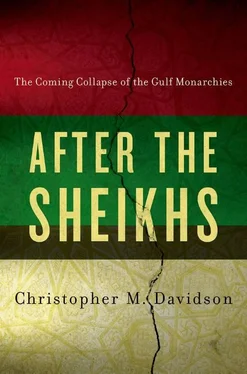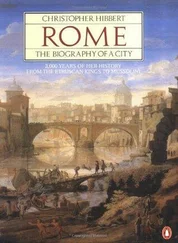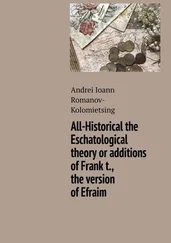Zeitoun, Muannad, 261
Zhejian province, of China, 108
Zinat Al-Bihar, 182
Zionism, 175–177
Zoroastrianism, 75
Zubarah, 19–20
1. According to International Monetary Fund data from 2010, the six Gulf monarchies had a combined GDP of $993 billion. This was more than half of the $1903 billion total GDP for all twenty-two Arab League member states at the time. Most dramatically, Saudi Arabia and the UAE together accounted for 35 per cent of the Arab League total. International Monetary Fund 2010; author calculations.
2. For discussions of this activity see, for example, Davidson, Christopher M., ‘Arab Nationalism and British Opposition in Dubai, 1920–1966’, Middle Eastern Studies , Vol. 43, No. 6, 2007; Fuccaro, Nelida, Histories of City and State in the Persian Gulf: Manama since 1800 (Cambridge: Cambridge University Press, 2009); Crystal, Jill, Oil and Politics in the Gulf: Rulers and Merchants in Kuwait and Qatar (Cambridge: Cambridge University Press, 1995).
3. For a full discussion see Kerr, Malcolm, The Arab Cold War, 1958–1970 (Oxford: Oxford University Press, 1971).
4. Saudi Arabia, already an independent state, was able to join the Arab League upon its inception in 1945. Kuwait joined in 1961, and was followed by the other Gulf monarchies in 1971.
5. Saudi Arabia and Kuwait joined OPEC upon its inception in 1960. Qatar joined in 1961, and the UAE’s principal oil-exporting emirate of Abu Dhabi joined in 1967. Bahrain, Oman, and the UAE’s other constituent members eschewed OPEC.
6. See Calabrese, John, ‘From Flyswatters to Silkworms: The Evolution of China’s Role in West Asia’, Asian Survey , No. 30, 1990. Referring to Said bin Taimur Al-Said.
7. The National Liberation Front.
8. For a good overview see Ismael, Tareq Y., The Communist Movement in the Arab World (London: Routledge, 2005).
9. Ladwig, Walter C., ‘Supporting Allies in Counterinsurgency: Britain and the Dhofar Rebellion’, Small Wars and Insurgencies , Vol. 19, No. 1, 2008, p. 73. Britain’s actions in Oman during this period were fictionalised by Ranulph Fiennes in his 1991 novel. See Fiennes, Ranulph, The Feather Men (London: Bloomsbury, 1991).
10. See Halliday, Fred, Arabia without Sultans (London: Saqi, 1974); Halliday, Fred, ‘Arabia Without Sultans Revisited’, Middle East Report , Vol. 27, No. 204, 1997.
11. Lerner, Daniel, The Passing of Traditional Society: Modernizing the Middle East (New York: The Free Press, 1958); Sigelman, Lee, ‘Lerner’s Model of Modernization: A Reanalysis’, Journal of Developing Areas , Vol. 8, July 1974, p. 525.
12. Lipset, Seymour Martin, ‘Some Social Requisites of Democracy: Economic Development and Political Legitimacy’, The American Political Science Review , Vol. 53, No. 1, 1959; Lipset, Seymour Martin, Political Man: The Social Bases of Politics (Baltimore: Johns Hopkins University Press, 1960).
13. Deutsch, Karl, ‘Social Mobilization and Political Development’, American Political Science Review , Vol. 55, No. 3, 1961.
14. Huntington, Samuel P., Political Order in Changing Societies (New Haven: Yale University Press, 1968), pp. 140–142.
15. Ibid., p. 169.
16. Pollin, Robert, ‘Resurrection of the Rentier’, New Left Review , Vol. 46, July — August 2007, pp. 140–153.
17. Ross, Michael, ‘Does Oil Hinder Democracy’, World Politics , Vol. 53, No. 3, 2001, p. 329.
18. Mahdavy, Hussein, ‘The Patterns and Problems of Economic Development in Rentier States: The Case of Iran’ in Cook, M. A. (ed.), Studies in Economic History of the Middle East (London: Oxford University Press, 1970), p. 428.
19. Beblawi, Hazem, ‘The Rentier State in the Arab World’ in Beblawi, Hazem, and Luciani, Giacomo (eds.), The Rentier State (New York: Croom Helm, 1987), p. 51.
20. Lucas, Russell E., ‘Monarchical Authoritarianism: Survival and Political Liberalization in a Middle Eastern Regime Type’, International Journal of Middle East Studies , Vol. 36, No. 4, 2004. As Lucas explains, small population size was previously used as a possible explanation for explaining demise of other monarchies.
21. Hertog, Steffen, Princes, Brokers, and Bureaucrats: Oil and State in Saudi Arabia (Ithaca: Cornell University Press, 2010).
22. Ross, p. 331.
23. Ibid., p. 332.
24. Ibid., p. 333.
25. For a full discussion see Davidson, Christopher M., The United Arab Emirates: A Study in Survival (Boulder: Lynne Rienner, 2005), chapter 4.
26. With reference to the Bahrain system see Kinninmont, Jane, ‘Bahrain’ in Davidson, Christopher M. (ed.), Power and Politics in the Persian Gulf Monarchies (London: Hurst, 2011). With reference to the Omani system see Valeri, Marc, ‘Oman’ in Davidson (2011).
27. With reference to the UAE system see Davidson (2005), chapter 4.
28. See Gray, Matthew, ‘A Theory of Late Rentierism in the Arab States of the Gulf’, Georgetown University Center for International and Regional Studies Occasional Papers , No. 7, 2011, pp. 23–36.
29. See Hudson, Michael, Arab Politics: The Search for Legitimacy (New Haven: Yale University Press, 1977).
30. Fromherz, Allen J., Qatar: A Modern History (London: IB Tauris, 2012), p. 5.
31. Sharabi, Hisham, Neopatriarchy: A Theory of Distorted Change in Arab Society (Oxford: Oxford University Press, 1992).
32. Weber, Max, ‘Politics as a Vocation ( Politik als Beruf )’ (Munich: 1919). An essay originating from a lecture delivered to the Free Students Union of Munich University in January 1919.
33. Brumberg, Daniel, ‘The Trap of Liberalized Autocracy’, Journal of Democracy , Vol. 13, No. 4, 2002, p. 56.
34. Ibid., p. 57.
35. See Hobbes, Thomas, The Leviathan (1660); Locke, John, Two Treatises of Government (1689); Rousseau, Jean-Jacques. The Social Contract, or Principles of Political Right (1762).
36. Kamrava, Mehran, The Modern Middle East: A Political History since the First World War (Los Angeles: University of California Press, 2005).
37. For discussions of the Dubai and Abu Dhabi ruling bargains see Davidson, Christopher M., Dubai: The Vulnerability of Success (London: Hurst, 2008), chapter 5; Davidson, Christopher M., Abu Dhabi: Oil and Beyond (London: Hurst, 2009), chapter 6.
Читать дальше












